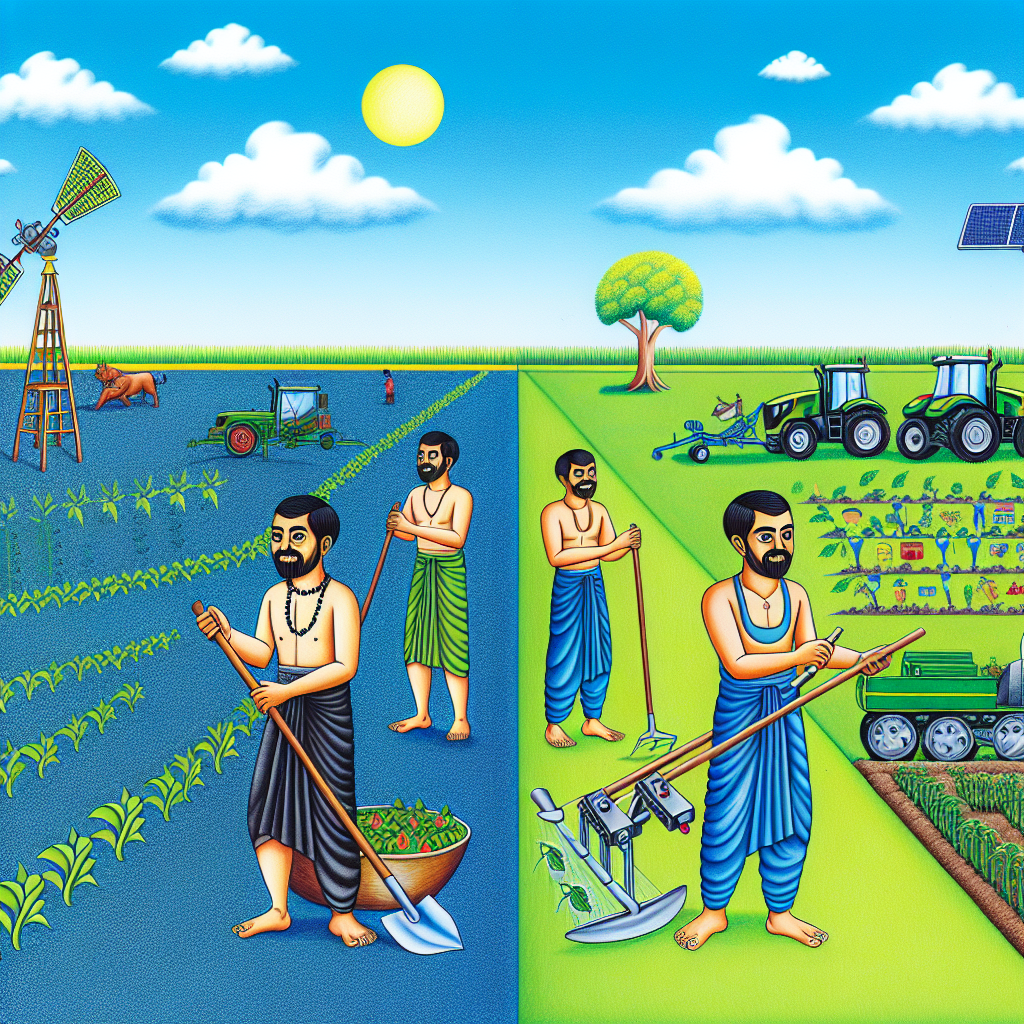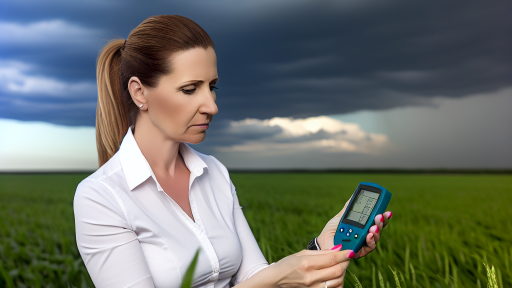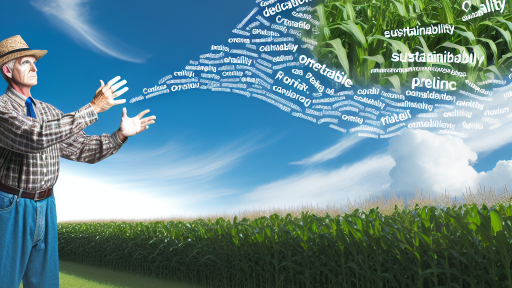Introduction to Robotics in Agriculture
Definition and Overview
Robotics in agriculture refers to the use of automated machines in farming roles.
This technology enhances efficiency and productivity in various farming tasks.
Common applications include planting, harvesting, and crop monitoring.
Additionally, it offers solutions for precision agriculture.
Farmers employ robotics to improve resource management effectively.
For instance, drones facilitate aerial imaging and soil analysis.
Moreover, autonomous tractors can operate without human intervention.
These advancements lead to increased yields and reduced labor costs.
Furthermore, robotics helps address labor shortages in the agricultural sector.
Overall, the integration of robotics transforms traditional farming methods.
The Benefits of Robotics in Agriculture
Robotics significantly boosts operational efficiency on farms.
As a result, farmers can achieve faster planting and harvesting times.
This technology also minimizes waste by optimizing input usage.
For example, precision irrigation systems conserve water resources.
Additionally, robotics contributes to higher crop quality through consistent monitoring.
Transform Your Agribusiness
Unlock your farm's potential with expert advice tailored to your needs. Get actionable steps that drive real results.
Get StartedData collected from robotic systems allows for informed decision-making.
Consequently, farmers can adjust their practices to improve outcomes.
Moreover, the use of robotics promotes sustainability in agriculture.
By reducing chemical use, farmers limit environmental impacts on ecosystems.
In essence, robotics offers numerous advantages, enhancing modern agriculture.
Future Trends in Agricultural Robotics
The future of robotics in agriculture is promising and innovative.
Emerging technologies will enhance automation and efficiency further.
For instance, artificial intelligence plays a crucial role in data analysis.
This integration will allow for more adaptive farming practices.
Robots will increasingly collaborate with farmers to address challenges.
As technology advances, we will see a rise in service robots.
These robots will perform tasks in both field and greenhouse settings.
Additionally, advancements in machine learning will improve robot capabilities.
As a result, these systems can learn from experiences in the field.
Overall, agricultural robotics holds the potential to reshape farming’s future.
Historical Evolution of Agricultural Robotics
From Manual Labor to Automation
Agricultural practices have transformed over centuries.
Initially, farming relied heavily on manual labor.
Farmers used basic tools and techniques to cultivate land.
As populations grew, so did the demand for food.
This increased pressure led to innovations in farming methods.
In the early 20th century, mechanization started to emerge.
Farmers embraced tractors and plows to ease workload.
Consequently, crop yields began to rise significantly.
However, challenges persisted in terms of labor shortages.
Showcase Your Farming Business
Publish your professional farming services profile on our blog for a one-time fee of $200 and reach a dedicated audience of farmers and agribusiness owners.
Publish Your ProfileWith advancements in technology, robotics became a focus.
Robotics introduced automation to various farming tasks.
This shift allowed farmers to optimize their operations.
Early Developments in Agricultural Robotics
The concept of robotic farming emerged in the late 20th century.
Researchers began developing prototype machines for specific tasks.
These machines included automated harvesters and seeders.
Research institutions played a vital role in these developments.
For instance, the University of California introduced innovations.
They developed robots capable of picking fruits without damage.
This progress attracted interest from the agricultural sector.
Gradually, robotics companies emerged to meet this demand.
Modern Advancements and Current Technologies
Today, agricultural robotics have reached advanced levels.
Robots can perform various tasks such as planting, weeding, and harvesting.
Many of these robots integrate AI to enhance efficiency.
One notable example is Blue River Technology’s “See & Spray.”
This technology uses computer vision to identify weeds.
It applies herbicides only where needed, reducing chemical use.
Furthermore, drones have revolutionized monitoring and surveillance.
Farmers now use drones for crop health assessments.
These advancements lead to improved sustainability in farming.
As robotics continue to evolve, the future looks promising.
Key Technologies in Agricultural Robotics
Drones in Agriculture
Drones are revolutionizing crop monitoring and mapping.
Farmers utilize drones to capture real-time data from their fields.
This technology enhances precision farming strategies.
Additionally, drones assist in the application of fertilizers and pesticides.
Operators can program drones to fly specific routes for efficiency.
Moreover, drone imagery enables farmers to identify issues quickly.
- Increased crop yields.
- Reduced operational costs.
- Enhanced field management.
Autonomous Tractors
Autonomous tractors are transforming traditional farming techniques.
These machines operate without human intervention.
Farmers program them for various tasks, from tilling to planting.
By using sensors and GPS, these tractors navigate fields with precision.
This reduces labor costs and increases productivity.
Furthermore, autonomous tractors minimize soil compaction and erosion.
- Improved fuel efficiency.
- Higher field coverage in shorter time frames.
- Consistent planting depth and spacing.
AI Systems in Agricultural Robotics
Artificial intelligence systems enhance decision-making in agriculture.
Farmers use AI to analyze weather patterns and soil conditions.
This information guides effective planting and harvesting schedules.
AI also plays a role in predicting pest invasions and disease outbreaks.
By integrating AI, farms can achieve greater sustainability.
Moreover, these systems support resource optimization and waste reduction.
- Predictive analysis improves yields.
- Automated reporting and monitoring increase efficiency.
- Data-driven insights lead to better strategic planning.
Discover More: Meeting Quality Standards for Global Agricultural Exports
Showcase Your Farming Business
Publish your professional farming services profile on our blog for a one-time fee of $200 and reach a dedicated audience of farmers and agribusiness owners.
Publish Your ProfileBenefits of Robotics in Agriculture
Increased Efficiency
Robotics significantly enhances agricultural efficiency.
Automated systems can perform tasks faster than human labor.
This leads to higher output and faster turnaround times.
Farmers can now focus on managing rather than executing tasks.
Furthermore, robots operate continuously without breaks.
They can work during peak seasons without fatigue.
Reduced Labor Costs
Implementing robotics in farming drastically lowers labor costs.
Automation reduces the number of workers needed on-site.
Additionally, robots minimize the need for specialized labor.
Thus, farmers can allocate resources more effectively.
In the long run, this savings can lead to increased profits.
Enhanced Precision
Robotics provide unmatched precision in farming tasks.
For instance, drones assist in accurate crop mapping and monitoring.
These technologies optimize inputs like water and fertilizers.
As a result, crops grow healthier and yield better results.
Moreover, precision farming reduces waste and environmental impact.
Investing in robotics supports sustainable agricultural practices.
Explore Further: Choosing the Best Countries to Export Your Farming Products
Challenges Facing Agricultural Robotics
Cost of Implementation
Implementing agricultural robotics incurs significant costs.
Farmers face expenses related to purchasing equipment.
Maintenance can also be a financial burden.
Many small-scale farmers struggle with these costs.
This leads to limited adoption of innovative technologies.
Adoption Barriers
Adoption of robotics in agriculture faces several barriers.
Firstly, there is a lack of awareness among farmers.
Many do not understand how robotics can benefit them.
Secondly, the technology can appear complex and intimidating.
This complexity deters potential early adopters.
Skill Gaps in the Workforce
The agricultural workforce often lacks the necessary skills.
Many workers are not trained to operate advanced machinery.
This skill gap hampers the effective use of robotics.
Furthermore, new training programs are slow to develop.
Without investment in education, the gap will persist.
Technological Limitations
Moreover, current robotics technology has its limitations.
For instance, some systems may not handle all crop types effectively.
Additionally, robotics often require favorable environmental conditions.
This can restrict their usability in variable climates.
Regulatory and Compliance Issues
Regulatory hurdles also complicate the integration of robotics.
Farmers must navigate complex agricultural regulations.
Compliance with safety and environmental standards is essential.
Showcase Your Farming Business
Publish your professional farming services profile on our blog for a one-time fee of $200 and reach a dedicated audience of farmers and agribusiness owners.
Publish Your ProfileThis can add another layer of difficulty for adoption.
Gain More Insights: Understanding Crop Insurance for Farmers

Case Studies: Successful Implementation of Robotics in Different Farming Practices
Autonomous Tractors in Large-Scale Farming
FarmTech Innovations successfully integrated autonomous tractors on a large estate.
These tractors operate 24/7, significantly increasing production efficiency.
Farmers now save time and labor costs while ensuring consistent crop management.
Additionally, GPS technology provides precise planting strategies.
This technology reduces fuel consumption and minimizes soil compaction.
Drones for Crop Monitoring
Aerial Innovations has pioneered the use of drones for crop surveillance.
Drones efficiently monitor crop health by capturing high-resolution images.
Farmers can identify pest infestations and nutrient deficiencies quickly.
Consequently, targeted treatments prevent crop loss and optimize yield.
Robotic Harvesters for Fruit and Vegetable Picking
Harvest Robotics introduced robotic harvesters to pick fruits and vegetables.
These machines mimic human dexterity while increasing picking speed.
Farmers report fewer losses due to bruising and damage.
Moreover, the robotic systems can operate in diverse weather conditions.
Smart Irrigation Systems
EcoGrow Systems has developed intelligent irrigation technologies.
These systems use sensors to monitor soil moisture levels in real-time.
Farmers receive data-driven insights to optimize water usage efficiently.
This innovation conserves water while ensuring crops receive adequate hydration.
As a result, overall farming sustainability improves significantly.
Integrating Robotics in Livestock Farming
AgriTech Solutions is transforming livestock farming with robotic assistants.
These robots handle feeding, milking, and health assessments of animals.
Farmers experience reduced physical strain and increased productivity.
Data analytics provides insights into animal health and behavior.
Consequently, these innovations enhance herd management practices.
See Related Content: Insurance Trends Impacting Modern Agribusiness
Future Trends in Agricultural Robotics
Advancements in Technology
Robotics in agriculture is rapidly evolving.
New technologies enhance efficiency and productivity.
For instance, autonomous drones monitor crop health effectively.
Moreover, sensors collect real-time data for precision farming.
These advancements allow farmers to make informed decisions.
Integration of Artificial Intelligence
Artificial intelligence plays a crucial role in agricultural robotics.
AI algorithms analyze data to optimize farming practices.
They predict crop yields and suggest the best planting times.
Consequently, farmers can maximize their resources efficiently.
This integration also reduces labor costs significantly.
Increased Robotics Adoption
More farmers are adopting robotic solutions today.
Robotics streamline various farming tasks efficiently.
For example, robotic harvesters can gather crops faster than humans.
Furthermore, they operate in adverse weather conditions.
Showcase Your Farming Business
Publish your professional farming services profile on our blog for a one-time fee of $200 and reach a dedicated audience of farmers and agribusiness owners.
Publish Your ProfileThis adaptability results in reduced wastage and increased outputs.
Environmental Sustainability
Robotics contribute to sustainable agricultural practices.
They minimize chemical usage through targeted applications.
Additionally, advanced robotics enhance soil health monitoring.
This helps reduce the environmental footprint of farming.
Farmers using robotics often see improvements in sustainability.
Collaborations and Partnerships
Collaboration between tech companies and farmers is increasing.
Startups focus on developing innovative agricultural robotic solutions.
Partnerships foster research and development in this field.
Moreover, these collaborations often lead to more accessible technologies.
As a result, small to medium-sized farms can also benefit.
Regulatory Frameworks and Support
Governments are introducing supportive policies for agricultural robotics.
These regulations aim to facilitate safe robotic usage in fields.
Additionally, grants and subsidies encourage farmers to adopt robotics.
This kind of support helps drive innovation in the sector.
Ultimately, it leads to a more resilient agricultural industry.
Impact of Robotics on Sustainable Farming Practices
Enhancing Efficiency
Robotics increases efficiency in agricultural operations.
These advanced technologies automate routine tasks.
As a result, farmers can focus on strategic planning.
Moreover, this reduces the physical strain on workers.
Precision Agriculture
Robots enable precision agriculture techniques.
They provide accurate data on soil and crop health.
This information supports informed decision-making.
Consequently, farmers can optimize resource usage.
This method minimizes waste and lowers costs.
Environmental Benefits
Robots contribute positively to environmental health.
They reduce the need for chemical pesticides.
Furthermore, they help in precise irrigation practices.
This leads to reduced water consumption.
Ultimately, these practices lower the ecological footprint.
Economic Implications
The adoption of robotics boosts agricultural productivity.
Higher yields can lead to increased profits for farmers.
Additionally, it opens new market opportunities.
Automation also brings down labor costs significantly.
This allows farmers to invest in further innovations.
Challenges and Considerations
Despite the benefits, challenges exist in robotics adoption.
High initial costs can deter small-scale farmers.
Moreover, there is a need for proper training.
Farmers must understand how to operate these machines.
Finally, regulatory issues regarding robotics in agriculture need addressing.
Showcase Your Farming Business
Publish your professional farming services profile on our blog for a one-time fee of $200 and reach a dedicated audience of farmers and agribusiness owners.
Publish Your ProfileAdditional Resources
AgTech: Ashiss Dash Of Infosys On The New Technologies That Are …




